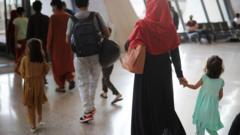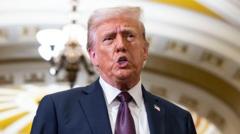The Bakwa District in Afghanistan, once a flourishing center for opium and drug production under the Taliban, has seen significant declines after a ban on poppy cultivation. This shift has transformed the landscape and economy, moving from a war-financing enterprise to a new era of drug eradication—and with it, local livelihoods are at stake.
From Prosperity to Decline: The Transformative Impact of Taliban Rule on Bakwa

From Prosperity to Decline: The Transformative Impact of Taliban Rule on Bakwa
A deep dive into how Taliban governance has dismantled Afghanistan's once-thriving drug hub in the Bakwa District, marking a drastic shift in opium production and local livelihoods.
In the heart of Afghanistan’s Bakwa District, a simple patch of grass once served as a communal space where local farmers gathered amidst a sea of thriving opium poppies. Over recent years, as the Taliban seized control, Bakwa morphed into a bustling hub for drug production—one that flourished as the insurgents navigated the chaos of war by capitalizing on the opium trade.
Farmers fled to this remote oasis, eager to escape the violence of war, drawn by the prospect of wealth from cultivating opium, heroin, and methamphetamines. The Taliban facilitated this growth by establishing infrastructure, including a trauma hospital funded by their burgeoning drug revenues, which often surpassed millions of dollars monthly. The illicit trade not only financed their military operations but also established Bakwa as a prototype for their ideological vision of governance.
However, the fortunes of this burgeoning economy have taken a sharp downturn. In a shocking reversal of policies, the very Taliban that once thrived on drug revenue instituted a sweeping ban on poppy cultivation. Thus, within two years of their rule without war, the group has effectively eradicated the very cash crop that sustained not only their efforts during the conflict but also a significant proportion of local livelihoods.
Reports indicate that almost no poppy stalks remain in an area that was once an opium-rich landscape. This drastic policy change, which aligns with the Taliban's attempts to assert legitimacy in the eyes of the international community, has left many local farmers in a perilous situation. What once provided economic security has now morphed into insecurity and uncertainty, challenging the very fabric of life in Bakwa.
As Bakwa navigates this new reality, the local populace is left grappling with the implications of a changing economy and searching for alternative livelihoods in a region where the scars of conflict and economic despair are still fresh. The transformation of Bakwa serves as a stark reminder of the complexities involved in governance, drug policy, and the socioeconomic fabric of a post-war Afghanistan.
Farmers fled to this remote oasis, eager to escape the violence of war, drawn by the prospect of wealth from cultivating opium, heroin, and methamphetamines. The Taliban facilitated this growth by establishing infrastructure, including a trauma hospital funded by their burgeoning drug revenues, which often surpassed millions of dollars monthly. The illicit trade not only financed their military operations but also established Bakwa as a prototype for their ideological vision of governance.
However, the fortunes of this burgeoning economy have taken a sharp downturn. In a shocking reversal of policies, the very Taliban that once thrived on drug revenue instituted a sweeping ban on poppy cultivation. Thus, within two years of their rule without war, the group has effectively eradicated the very cash crop that sustained not only their efforts during the conflict but also a significant proportion of local livelihoods.
Reports indicate that almost no poppy stalks remain in an area that was once an opium-rich landscape. This drastic policy change, which aligns with the Taliban's attempts to assert legitimacy in the eyes of the international community, has left many local farmers in a perilous situation. What once provided economic security has now morphed into insecurity and uncertainty, challenging the very fabric of life in Bakwa.
As Bakwa navigates this new reality, the local populace is left grappling with the implications of a changing economy and searching for alternative livelihoods in a region where the scars of conflict and economic despair are still fresh. The transformation of Bakwa serves as a stark reminder of the complexities involved in governance, drug policy, and the socioeconomic fabric of a post-war Afghanistan.





















